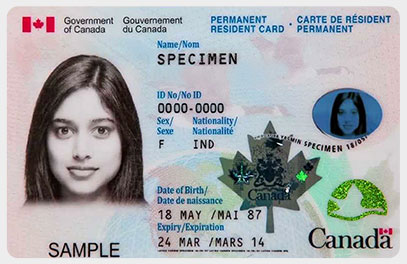How to Apply for a Canadian PR Card After Receiving COPR (step-by-step guide)

**Please review the disclaimer at the end of this document before reading or using this guide.
Have you just received your Confirmation of Permanent Residence (COPR)? Congratulations on your success! You are now a Permanent Resident of Canada!
After successfully obtaining your COPR and landing in Canada, one of your next crucial steps as a new immigrant in Alberta is to apply for a Canadian Permanent Resident (PR) Card. This card is your official proof of status as a permanent resident and is essential for travel and identification within Canada. This guide provides information on how to apply for a PR Card after receiving your COPR.
Step 1: Understand the Purpose of the PR Card
The Permanent Resident Card serves as:
- Proof of your status as a permanent resident in Canada.
- A travel document required to re-enter Canada on a commercial carrier (plane, bus, train, or boat).
Step 2: Initial Entry with COPR
When you first arrive in Canada with your COPR, you will:
- Present your COPR and visa to the border services officer.
- Answer some basic questions to confirm your intention to reside in Canada.
- Have your COPR signed and stamped by the officer, officially landing you as a permanent resident.
Step 3: Automatic PR Card Application Upon Landing
In most cases, your initial PR Card application is processed automatically when you land in Canada and present your COPR. Here’s what happens:
- The border services officer will collect your Canadian address to send your PR Card.
- Ensure you provide a complete and accurate address where your PR Card can be mailed.
Step 4: Checking the Status of Your PR Card
You can check the status of your PR Card application online through your IRCC (Immigration, Refugees, and Citizenship Canada) account. Here’s how:
- Log into your IRCC account.
- Navigate to the “View my submitted applications or profiles” section.
- Check the status of your PR Card application.
Step 5: Receiving Your PR Card
Once your PR Card application is processed, it will be mailed to the Canadian address you provided. It typically takes about 13 weeks to receive your PR Card. If you do not receive it within this timeframe, you can contact IRCC for assistance.
Step 6: Applying for a PR Card if It Was Not Automatically Processed
In some cases, your PR Card may not be automatically processed upon landing. If this happens, you will need to apply for a PR Card manually. Here’s how:
Prepare the Application:
- Download the PR Card application form (IMM 5444) from the IRCC website.
- Complete the form accurately.
Gather Required Documents:
- A copy of your COPR or Record of Landing (IMM 1000).
- A copy of a valid passport or travel document.
- Two photos that meet IRCC specifications.
- Any other documents specified in the application guide.
Pay the Application Fee:
- Pay the required application fee online through the IRCC website.
Submit the Application:
- Mail your completed application form, supporting documents, photos, and proof of payment to the address provided in the application guide.
Step 7: Keep Your PR Card Secure
Once you receive your PR Card, it is essential to keep it secure:
- Always carry your PR Card when traveling outside Canada, as you will need it to re-enter.
- Store your PR Card in a safe place when not in use.
- Notify IRCC immediately if your PR Card is lost, stolen, or damaged to get a replacement.
Step 8: Renewing Your PR Card
Your PR Card is typically valid for five years. You should apply to renew it at least six months before it expires to ensure you maintain continuous proof of your permanent resident status.
Applying for your Canadian Permanent Resident Card is a vital step in establishing your life in Canada. By following these steps and ensuring all information and documents are accurately provided, you can efficiently obtain your PR Card and enjoy the benefits of permanent residency in Canada. Welcome to Canada, and best wishes on your new journey!
**DISCLAIMER: This document was prepared based on information gathered from various online sources. While our aim is to provide accurate and helpful information to newcomers in Canada, Active Action cannot be held responsible for any actions, outcomes, or situations that may arise from the use of this document. We strongly recommend that you verify any details with official sources or relevant authorities if you have any doubts or uncertainties about any information provided in this document. If you have any specific questions about the information in this document, or if you notice any inaccuracies or missing information, please inform us immediately through the contact form. We will respond to you as soon as possible and/or update the information as necessary.


